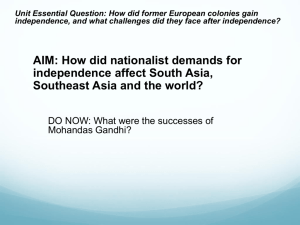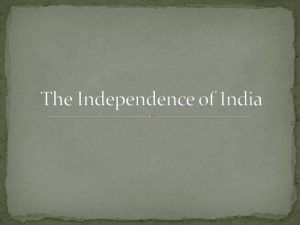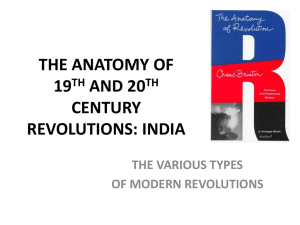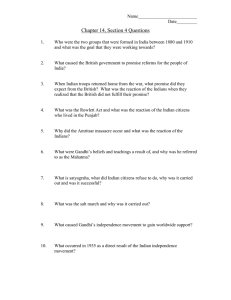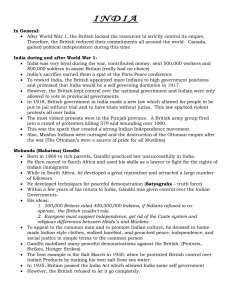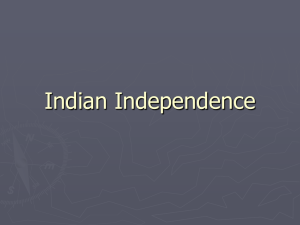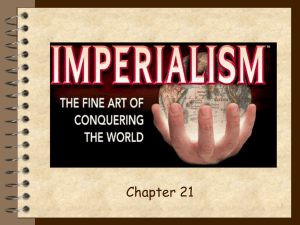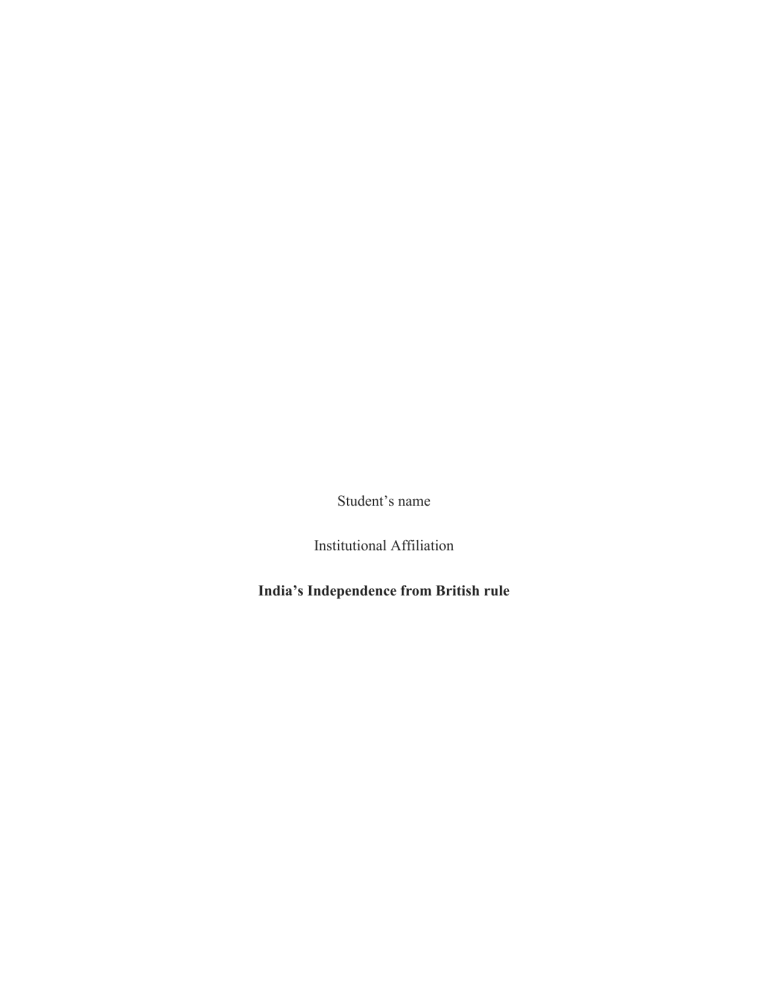
Student’s name Institutional Affiliation India’s Independence from British rule India’s Independence from British rule In the 1900s, Nationalism groups raised the wants of Indians to self-rule against the British rules. In 1855, the Indian National Congress was formed by the growing nationalism, later accompanied by the Muslim League in 1906. Hindus and Muslims share similarities in serving under British rule, and supporting democracies (Houghton 2018). The British Raj reorganizes territories to separate the province into the Muslims section and Hindus section. The separation makes British administration easy The nationalist face difficulty in uniting for independence. The two nationalist groups targeted achieving freedom against British superiority. Muslims and Hindus have divisions, but the shared goal of independence keeps their relationship held. Rowlatt Acts got enacted by British rule in 1919 after they denied Indian army troops independence against their agreement. Radical nationalists resisted the British rule violently British government jailed protestors without trial for two years and above. Trial by jury is denied to educated Indians and British oppress the Indian troops. A nationalist group of about 10,000 Hindus and Muslims protest in Amritsar. They host a festival to fast and pray as political speeches tate theme. British commander is upset because he banned gatherings, Hindus in gathering are shot without warning by ordered British troops for disobeying the no gathering rule. Around 400 Indian deaths and 1,200 wounded patients record the Amritsar Massacre. Indians resisted the British to form nationalism provoked by the massacre to claim selfgovernance. The nationalism movement led by Mohandas K. Gandhi often used religion to approach politics. However, Gandhi shows the move by: Endorsing the Indian National Congress not to cooperate with the British government. Gandhi campaigned in 1920 for civil disobedience, aiming for self-rule and economic power for India against the British. His nonviolent tactics made satyagraha; he told Indians to work only among them and stop supporting British businesses (Houghton 2018). Indians stopped paying taxes, buying, and voting in British elections. British clothing businesses dropped when Gandhi led a boycott to make Indian clothes. Gandhi led the Salt March to protest against Salt Acts that only allowed Indians to buy salt from the British and pay tax. He took his troop to the seacoast and made salt by collecting seawater, evaporating to get their own salt and demonstrated to shut British salt firms. After world war II, the British handed over power, faced with war debts and high costs of maintaining colonies. Independence power created boundaries as both Muslims and Hindus wanted different governments. Muhamad Ali Jinnah asked all Muslims to resign from the Hindu dominant congress party. A battle to take the region between Pakistan and India inflamed, after independence in Kashmir, The United Nations peace intervention allocated a third to Pakistan while India got the rest share. Jawaharlal Nehru became India’s first prime minister On August 15th, 1947, on grant of India’s Independence from British rule. He followed Gandhi’s ideas and emphasized democracy, modernization and unity. Industrialization was Jawaharlal’s key to opening India’s economy. Jawaharlal’s dies in 1964 and her daughter Indira Gandhi succeeds as prime minister (Houghton 2018). Nuclear tension rises in India and Pakistan as both have nuclear weapons Pakistan respondes to India showcasing their nuclear weapons as they launch after India. The Bharatiya Janata Party came in 2014 to rescue the economy Narendra Modi is elected by Indians as prime minister Modi uses his experience of poor background to relate well with the poor people in his country. Reference Houghton, M. H. (2018). The colonies become new nations. The Indian subcontinent achieves freedom, 3-12
